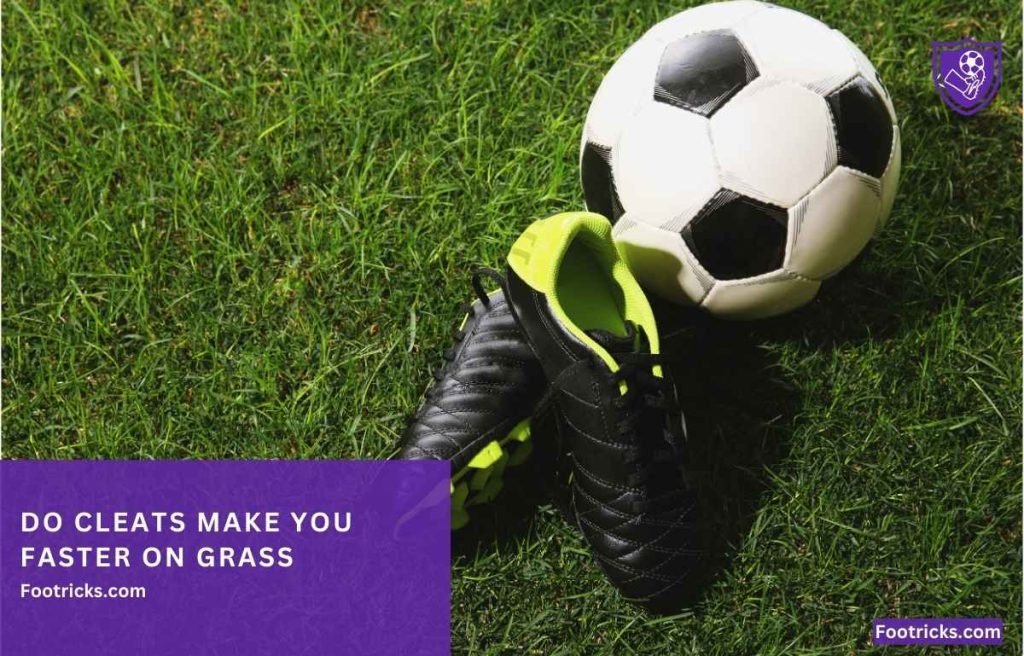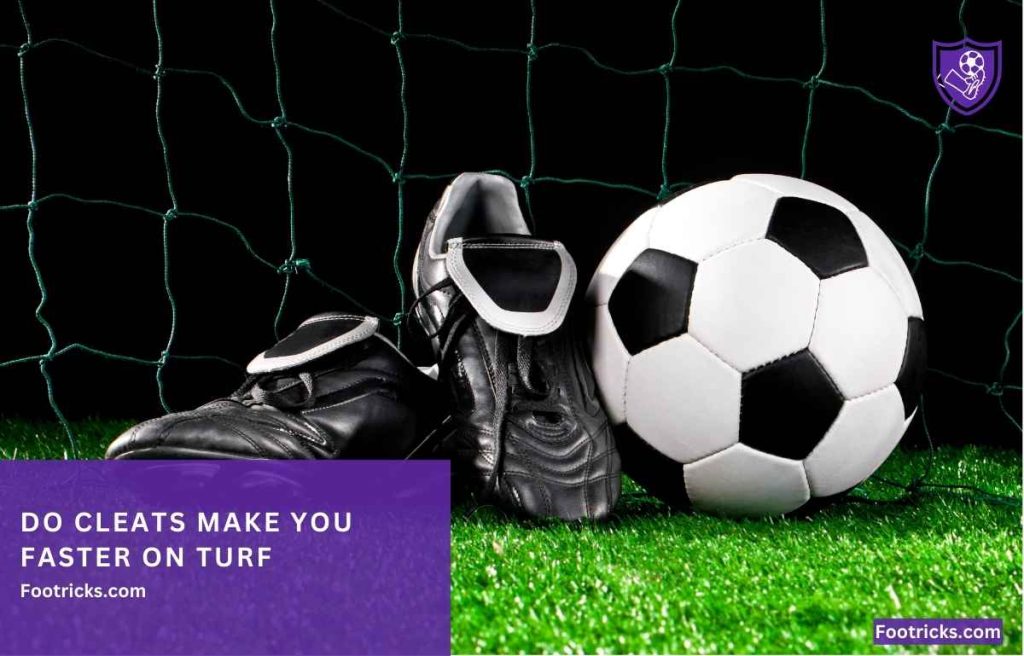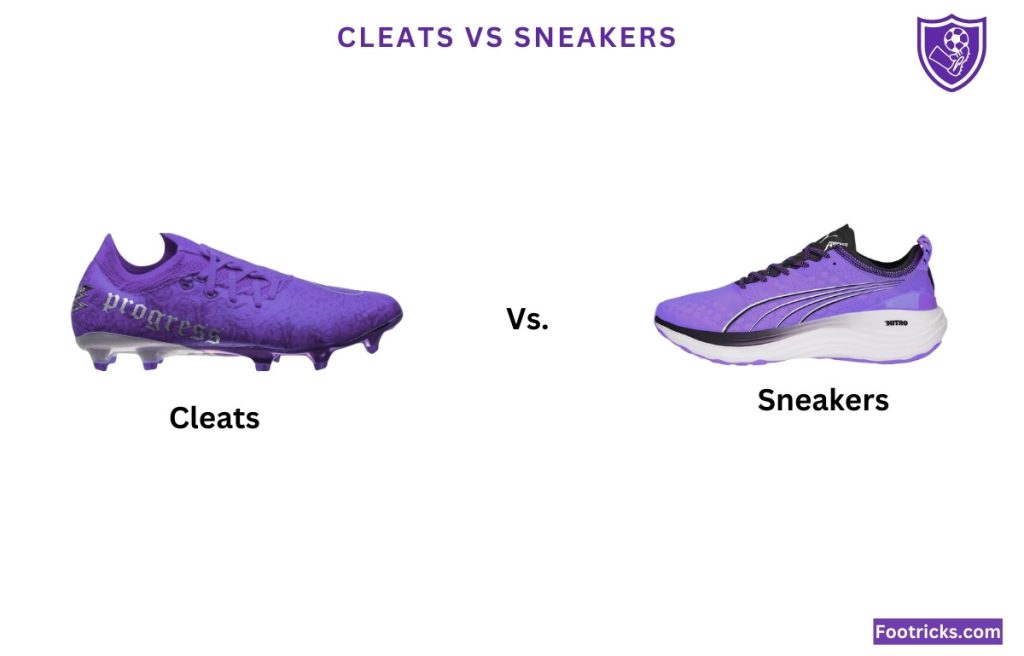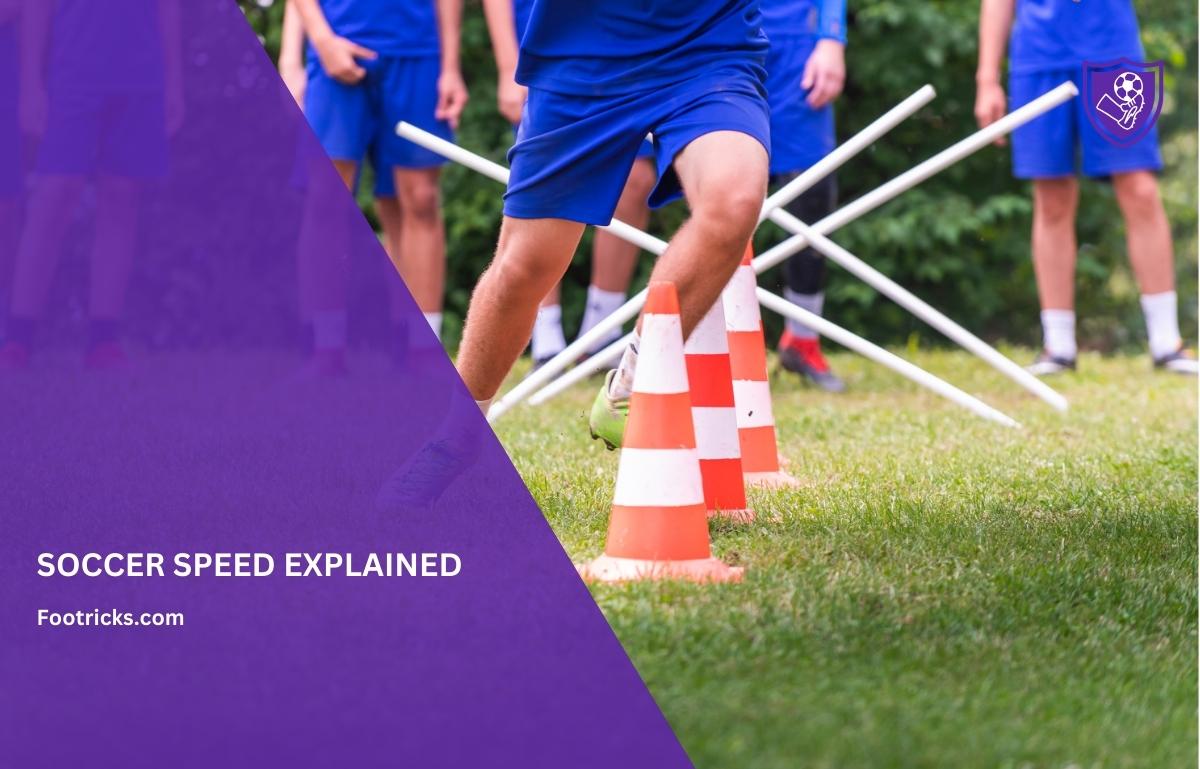Do Cleats Help You Run Faster? Soccer Speed Explained
Last Updated on: 31st August 2025, 07:25 pm
Yes, cleats help you run faster because they provide more traction, stronger acceleration, and greater stability compared to sneakers. On grass or turf, the studs dig into the surface, preventing slips and allowing each stride to generate maximum power.
That’s why soccer stars like Cristiano Ronaldo and Kylian Mbappé wear speed boots such as the Nike Mercurial Superfly or Adidas X. These cleats are specifically engineered to unleash explosive pace and agility during matches, giving players the confidence to sprint at full power without worrying about losing their footing.
Why Soccer Cleats Make You Faster
The main reason cleats improve running speed is traction. Sneakers or flat-soled shoes tend to slide on grass, which wastes energy and slows acceleration. Cleats dig into the ground with their studs, allowing players to push off with more force. This means that every step transfers energy more efficiently into forward motion.
But traction is only part of the story. Cleats also enhance stability and balance, which are critical when making sudden changes of direction or sprinting while controlling the ball. Without the grip and support of studs, players would slip more often, lose momentum, and tire faster trying to stay upright.
On top of that, modern cleats are designed to be ultra-lightweight. Some speed boots weigh less than 200 grams, making them feel almost like barefoot running shoes. Lighter boots reduce fatigue and allow players to sustain higher speeds throughout the game, especially during late-match sprints when heavy legs can be the difference between scoring and missing a chance.
Do Cleats Make You Faster on Grass?

On natural grass pitches, cleats are not just helpful; they are essential. Grass can be uneven, damp, or slippery, and flat shoes are almost useless in those conditions. The studs of soccer cleats dig into the surface and provide grip where sneakers would slide.
This grip translates directly into faster sprints and quicker cuts. When players push off the ground in sneakers, some energy is lost as the shoe slips slightly on the surface. With cleats, that energy is directed forward, giving the player more explosive acceleration. That’s why legendary runs from players like Ronaldo or Gareth Bale are only possible with cleats designed for grass surfaces.
Do Cleats Make You Faster on Turf?

Artificial turf is firmer and provides more natural traction than grass, but cleats still offer advantages. Turf-specific models utilize shorter rubber or plastic studs that provide grip without digging too deeply. These allow for sharp accelerations, fast pivots, and stable balance while sprinting.
While the speed improvement is less dramatic compared to grass, turf cleats still make a difference. Sneakers can feel slippery on turf when making quick turns, and they don’t provide the same responsiveness during sprints. For competitive soccer, even on turf, cleats remain the preferred choice for anyone seeking maximum speed and control.
Cleats vs Sneakers: Which Makes Athletes Faster?

Cleats are faster than sneakers in soccer, whether on grass or turf. Sneakers may work for casual training or street play, but they lack studs and therefore cannot provide the same level of traction. Without grip, sneakers waste energy and force players to slow down to maintain balance.
Cleats, on the other hand, maximize energy transfer and give athletes the ability to sprint, cut, and accelerate with confidence. That’s why professional footballers never wear sneakers on the pitch. Imagine Cristiano Ronaldo or Lionel Messi trying to play in running shoes; not only would they lose their edge in speed, but the risk of slipping or injury would skyrocket. Sneakers are only useful for indoor futsal or non-grass training environments.
Soccer Stars and Their Speed Cleats
Soccer cleats aren’t just functional; they’re carefully engineered for player needs. Speed boots are designed for wingers and strikers who rely on pace, while control-focused boots cater to midfielders who prioritize passing and ball handling.
- Cristiano Ronaldo: Nike Mercurial Superfly, engineered for explosive sprints and acceleration.
- Kylian Mbappé: Nike Mercurial, built for raw pace and agility.
- Lionel Messi: Adidas X Speedportal, blending agility, ball control, and speed.
- Classic Icons like Kaká & Beckham: Adidas Predator, emphasizing control but still supporting fast breaks.
For Ronaldo in particular, the Mercurial Superfly has become a trademark. Its snug fit and aerodynamic build help him explode down the wing, proving that the right cleats are as important as physical ability.
How Much Faster Do Cleats Make You?
Cleats don’t magically make athletes faster, but they unlock natural speed potential. The difference is seen in efficiency. Every step in cleats channels more energy forward, while sneakers let some slip away due to poor grip.
Over short sprints (5–10 meters), cleats can make a noticeable difference, helping players accelerate faster and beat opponents to the ball. In longer runs (30–40 meters), cleats help maintain top speed while carrying the ball. During sharp dribbles or turns, cleats prevent slipping and allow smoother, faster changes of direction.
For elite players like Ronaldo or Mbappé, even a fraction of a second is game-changing. For amateurs, the advantage is just as valuable: fewer slips, more stable sprints, and greater efficiency in every movement.
Other Advantages of Soccer Cleats
While speed is the main question, cleats offer much more:
- Agility: Enhanced balance for sudden changes in direction.
- Ball Control: Textured uppers help grip the ball during dribbles and strikes.
- Durability: Designed for grass and turf, they last longer than sneakers in soccer conditions.
- Confidence: When players trust their boots, they play more aggressively and at higher intensity.
These extra benefits make cleats an all-around performance tool, not just a speed booster.
Tips for Choosing Cleats That Boost Speed
- Pick the Right Studs: FG (firm ground) for natural grass, AG (artificial ground) for turf.
- Go Lightweight: Models like Nike Mercurial, Adidas X, and Puma Ultra are built for speed.
- Fit is Critical: A snug, sock-like fit ensures faster responsiveness than loose boots.
- Break Them In: Don’t wear brand-new cleats in matches; train with them first so they mold to your feet.
FAQs About Soccer Cleats and Speed
Which cleats does Cristiano Ronaldo wear?
Ronaldo wears the Nike Mercurial Superfly, one of the lightest speed-focused boots in soccer.
Do cleats help amateur players, too?
Yes. Even casual players benefit from the grip and stability, running faster and safer than in sneakers.
Final Words:
Cleats are not just footwear; they are performance tools. On grass or turf, they improve traction, acceleration, and balance, allowing players to sprint and turn at full speed.
Cristiano Ronaldo’s bursts of pace, Mbappé’s explosive runs, and Messi’s sharp dribbles are all supported by cleats built for speed. Talent and training are crucial, but the right pair of boots makes sure every step counts.
For both professionals and amateurs, cleats make the difference between slipping behind and sprinting ahead. If speed matters to your game, cleats will help you run faster.

I’m a professional football player from Prince Football Club, and a Computer Science student passionate about sharing football knowledge and helping young players improve. I founded Footricks to give footballers access to real, practical training tips, fitness routines, and game strategies backed by my experience on the field. Whether you’re just starting or want to take your game to the next level, my mission is to guide you through every step of your football journey.







